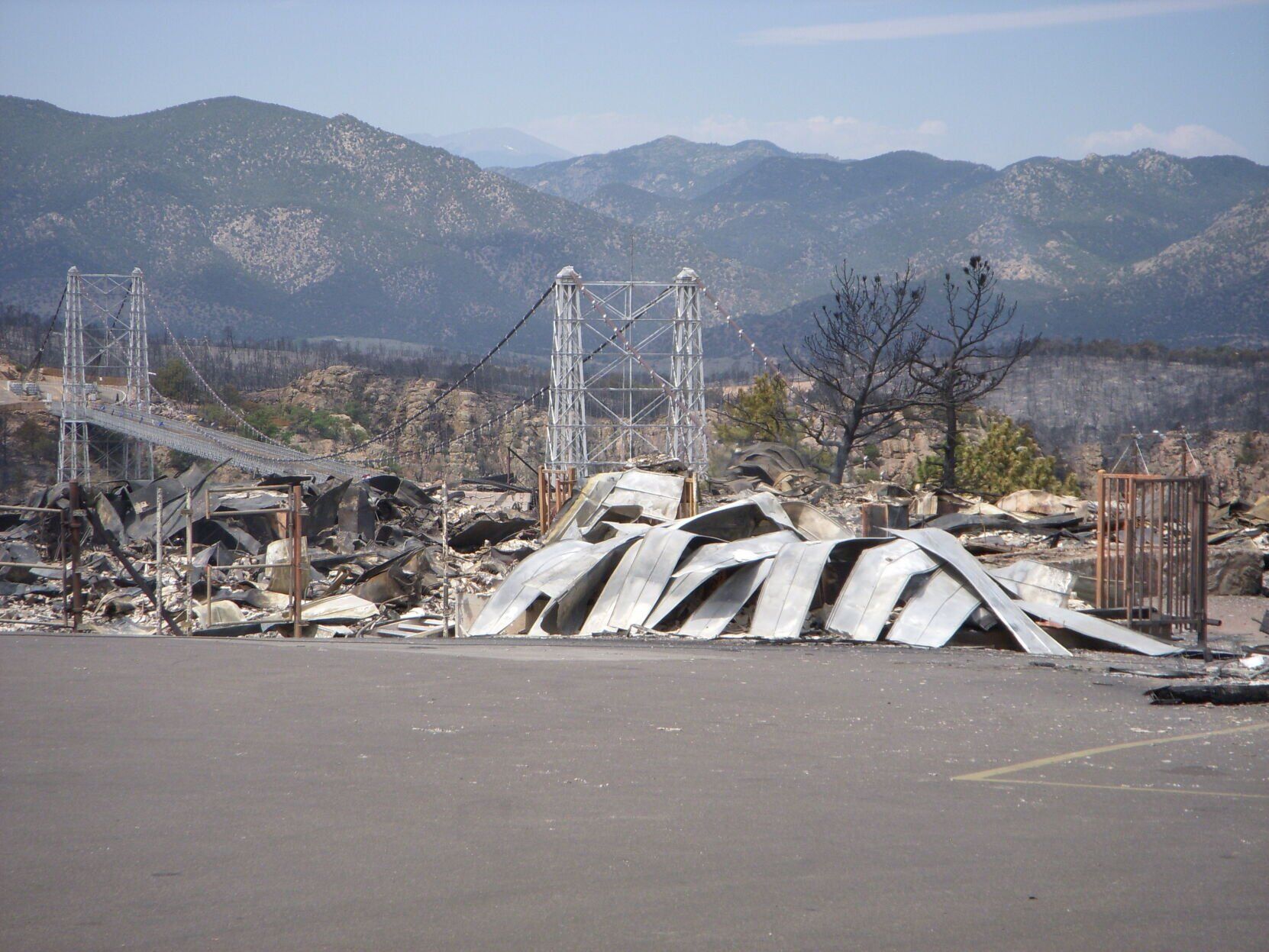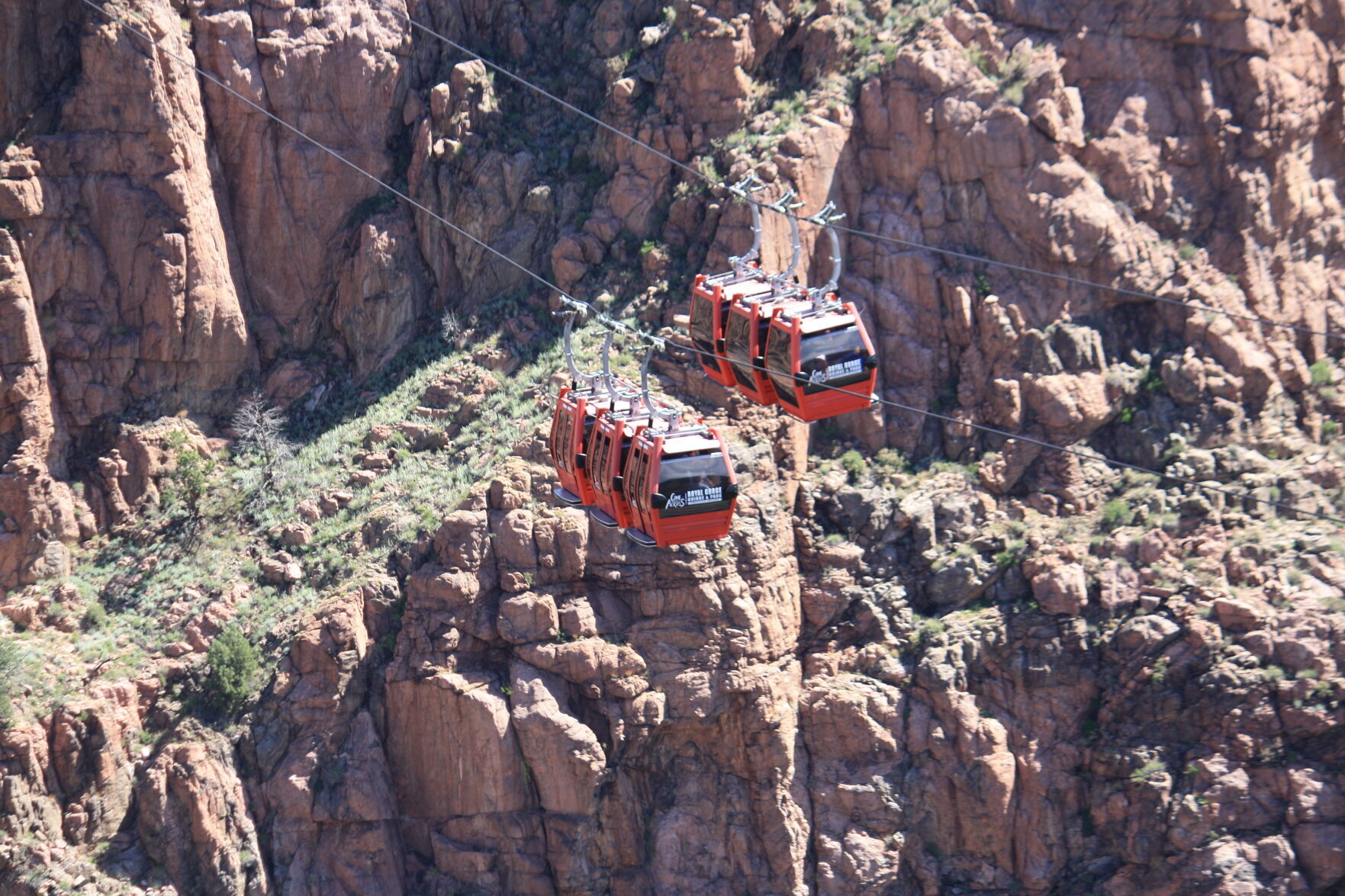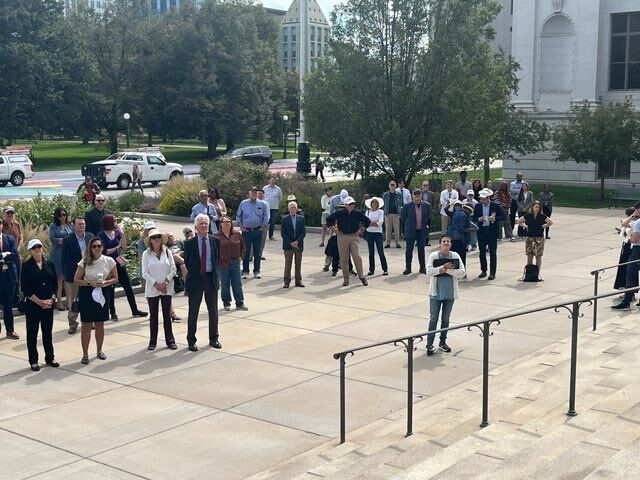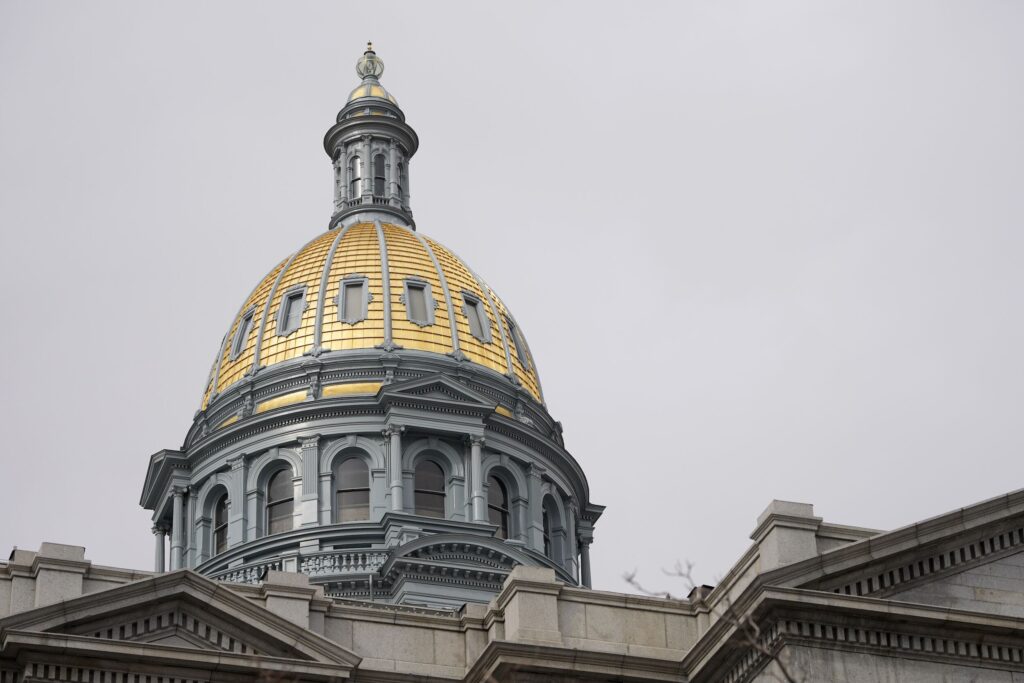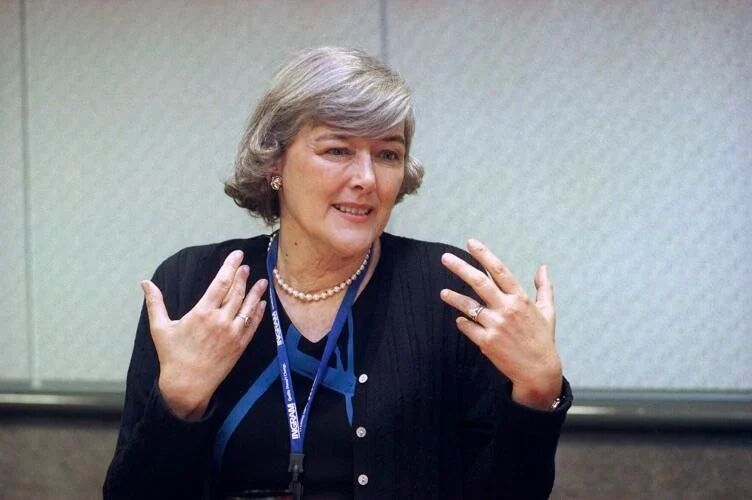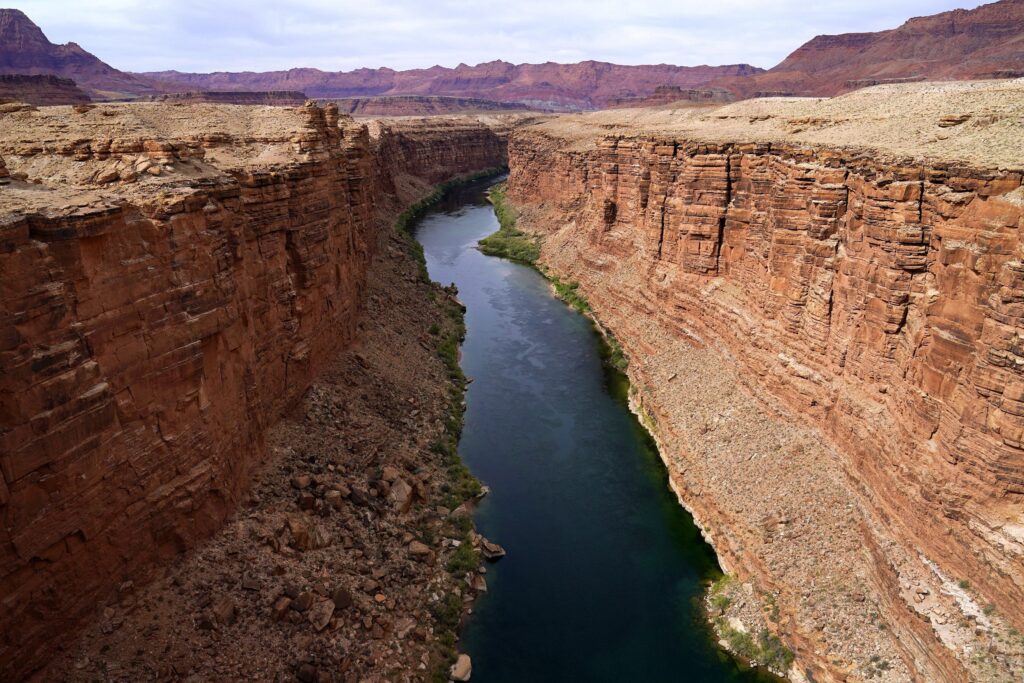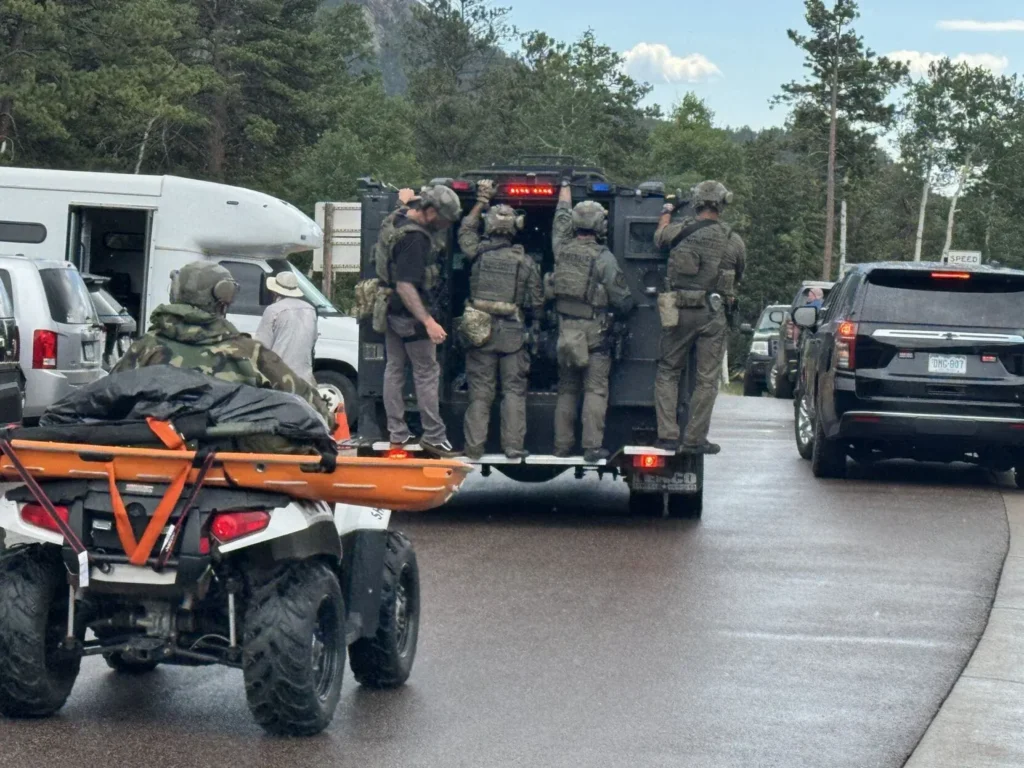‘Everything was gone’: Royal Gorge Park employees remember 2013 blaze
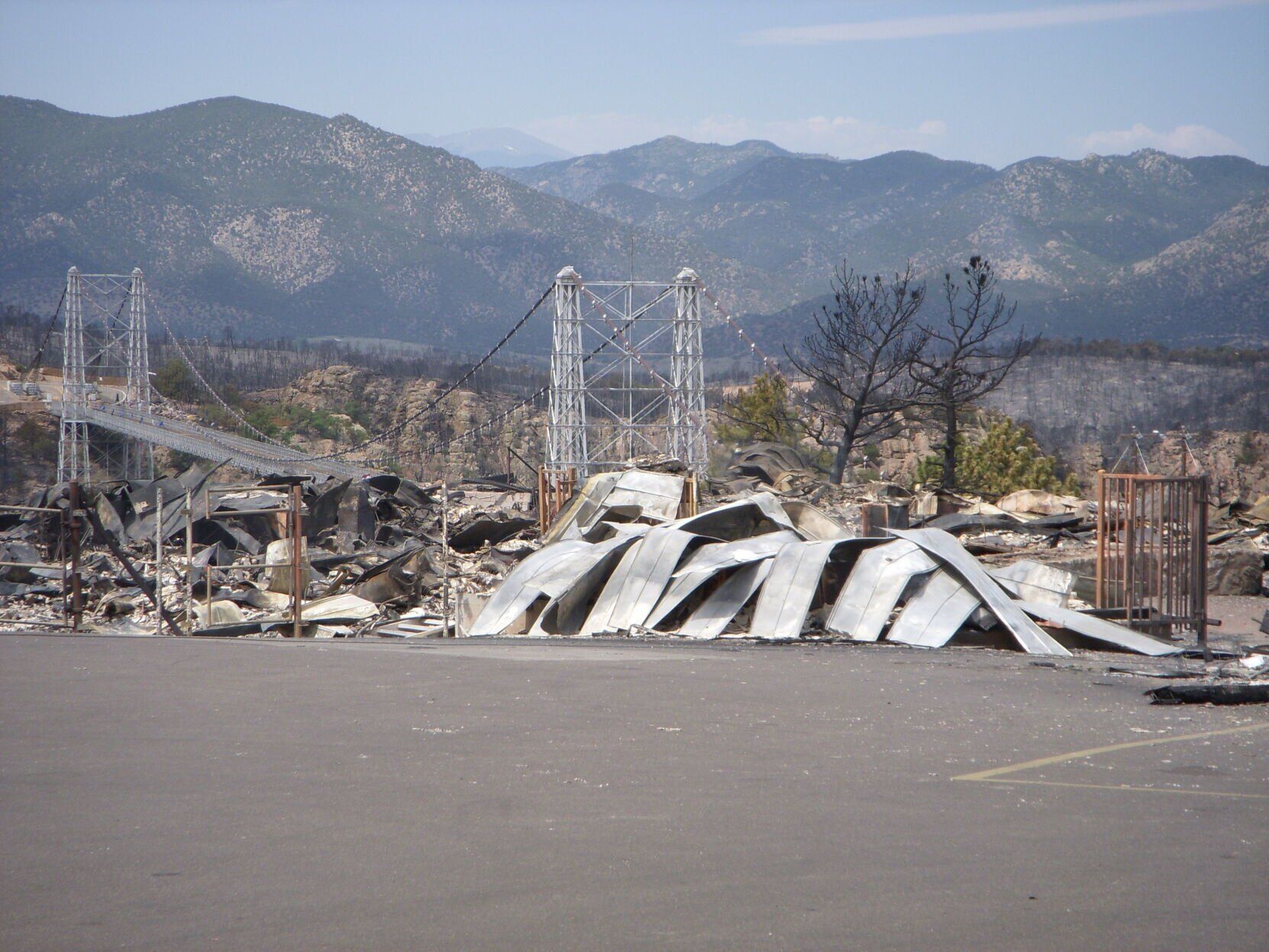
On the same day the Black Forest fire began cutting a deadly swath through 15,000 acres and more than 500 structures, another, smaller blaze destroyed one of southern Colorado’s most popular tourist attractions.
“The Black Forest Fire was bigger, there were deaths, and lots of homes were destroyed, so it received more national attention,” said Brett Hargrave, general manager of the Royal Gorge Bridge and Park. “Ours was more like a blip on CNN. But a lot of people were affected by it.”
The Royal Gorge Fire scorched more than 3,200 acres, and while no homes were destroyed, the damage to the park was nothing short of catastrophic, officials said. When the fire was out, and the smoke had mostly cleared, only four of the park’s 52 structures were left standing.
Ten years have elapsed since the blaze, but Peggy Gair, the park’s human resources director, remembers like it was yesterday – right down to the warm, breezy weather conditions.
“It was a memorable day, so it sticks in my mind,” Gair said.
In the early afternoon of June 11, 2013, a wildfire was reported on the south side of the Royal Gorge Bridge. Soon after that, Gair and other park employees were advised to get ready to evacuate.
“We were starting to pack our desks and get ready to leave,” she said. “Then we heard someone on our radios saying, ‘It jumped the gorge! It jumped the gorge!'”
Firefighters showed up and told the employees there was no time to pack. It was time to leave.
Park rangers and fire crews evacuated more than 1,000 visitors and about 200 staff members without any serious injuries, officials said. But they were forced to leave behind about 60 head of elk, buffalo, horses and bighorn sheep.
“I could hardly sleep that night, thinking about the animals,” Gair remembers. “But a couple of days later, we were told that they were all OK.”
“(The animals) all survived,” Hargrave said. “I was shocked when I learned that.”
The fire burned about 360 acres of land within the park itself, but those numbers don’t begin to tell the tale, Gair said.
Park officials weren’t allowed to go back to the park for about two days. When it was finally safe to return, the place looked like a dystopian wasteland, according to Hargrave.
The visitors’ center was now a pile of ashes and molten, twisted metal. Other structures had been reduced to formless masses of smoldering debris. The building that housed the aerial tram, and the gondola inside, was destroyed. The cable connecting the two tram stations had fallen into the gorge.
“Total destruction,” Hargrave said. “Everything was gone. It looked like a war zone.”
“One of our park rangers said it looked like a bomb had gone off,” Gair said.
It didn’t take long for insurance adjusters to confirm what Gair and Hargrave already knew: The Park was a complete loss.
“Normally, it takes a while for insurance adjusters to investigate the damage and make a determination,” Hargrave said. “When I walked them through the park, it took them about 30 seconds (to declare the park a total loss).”
The bridge suffered minimal structural damage, and only a few planks had to be replaced. The Plaza theater and the Sky Coaster were also intact. But almost everything else would need to be rebuilt.
“We started thinking about a rebuild right away,” Hargrave said. “We knew we had to move fast.”
The park is a central part of the area’s tourism industry, but it’s more than that to the people of Cañon City and surrounding areas, residents said. It’s a part of the culture, and a rebuild would go a long way toward restoring morale.
“It was important to the city, of course,” Hargrave said. “But this place is also important to the people who live and work here.”
It took a concerted, 14-month effort between the park and the city to refurbish the park. By the 2014 Labor Day weekend, the park was again open for business.
“Reconstruction was still going on, even as the park reopened,” Gair said. “But people were eager to come back.”
With the exception of the Sky Coaster, the bridge and the theater, all the structures have been renewed or replaced, and the park is back to welcoming 350,000 to 400,000 guests per year, officials said. According to Hargrave, the newer structures and rides operate more efficiently and require less maintenance than the older ones.
“(The fire) was the worst thing that could have happened to the park,” Hargrave said. “But in some ways, it was also one of the best.”
Royal Gorge fire claims 20 structures; bridge and Canon City intact
Mountain Shadows family remembers devastation of Waldo Canyon fire
